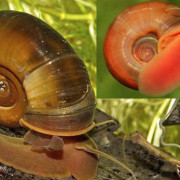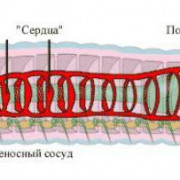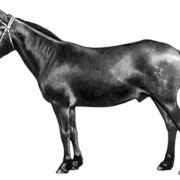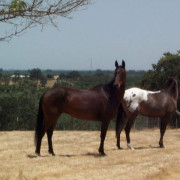Гигантский доисторический ящер — Аргентинозавр
Содержание:
References
- ^ Bonaparte J, Coria R (1993). «Un nuevo y gigantesco sauropodo titanosaurio de la Formacion Rio Limay (Albiano-Cenomaniano) de la Provincia del Neuquen, Argentina». Ameghiniana (in Spanish). 30 (3): 271–282.
- ^
- ^
- Paul, Gregory S. (1997). «Dinosaur models: the good, the bad, and using them to estimate the mass of dinosaurs». In Wolberg, D. L.; Stump, E.; Rosenberg, G. D. (eds.). DinoFest International Proceedings. The Academy of Natural Sciences. pp. 129–154.
- S., Paul, Gregory (October 25, 2016). The Princeton field guide to dinosaurs (2nd ed.). Princeton, N.J. ISBN . OCLC .
- ^
- Novas, Fernando E. (2009). The age of dinosaurs in South America. Bloomington: Indiana University Press. pp. 204–205. ISBN 978-0-253-35289-7.
- Novas, F. E.; Ezcurra, M. (2006). «Reinterpretation of the dorsal vertebrae of Argentinosaurus huinculensis (Sauropoda, Titanosauridae)». Ameghiniana. 43 (4): 48–49R.
- ^
- ^
- ^
Paleoecology

Skeletal mounts of , a large carnivore from the Huincul Formation
Argentinosaurus was discovered in the Argentine Province of . It was originally reported from the Huincul Group of the Río Limay Formation. More recently, the units have been referred to as the and the , the latter of which is a subdivision of the . The Huincul Formation is composed of yellowish and greenish of fine to medium grain, some of which are . These deposits likely come from the Late age.
Fossilized indicates a wide variety of plants from the Huincul Formation. A study of the El Zampal section of the formation found , , , , possible , (including and ), and (flowering plants), in addition to several grains of unknown affinities. The fauna of the Huincul Formation includes (including ), , and .
In addition to Argentinosaurus, the Huincul Formation has yielded several other dinosaurs. These include other like the and and the titanosaur ., including such as and , such as and , , and other theropods such as and have also been discovered there. Several have also been found in the Huincul Formation, including and some others that have not been identified.
Paleoecology
Skeletal mounts of Mapusaurus roseae, a large carnivore from the Huincul Formation
Argentinosaurus was discovered in the Argentine Province of Neuquén. It was originally reported from the Huincul Group of the Río Limay Formation. More recently, the units have been referred to as the Huincul Formation and the Río Limay Subgroup, the latter of which is a subdivision of the Neuquén Group. The Huincul Formation is composed of yellowish and greenish sandstones of fine to medium grain, some of which are tuffaceous. These deposits likely come from the Late Cenomanian age.
Fossilized pollen indicates a wide variety of plants from the Huincul Formation. A study of the El Zampal section of the formation found hornworts, liverworts, ferns, Selaginellales, possible Noeggerathiales, gymnosperms (including gnetophytes and conifers), and angiosperms (flowering plants), in addition to several grains of unknown affinities. The fauna of the Huincul Formation includes fish (including dipnoans), turtles, and crocodilians.
In addition to Argentinosaurus, the Huincul Formation has yielded several other dinosaurs. These include other sauropods like the rebbachisaurids Cathartesaura and Limaysaurus and the titanosaur Choconsaurus.Theropods, including carcharodontosaurids such as Mapusaurus and Taurovenator, abelisauroids such as Skorpiovenator and Ilokelesia, unenlagiines, and other theropods such as Aoniraptor and Gualicho have also been discovered there. Several iguanodonts have also been found in the Huincul Formation, including Gasparinisaura and some others that have not been identified.
References
- ^
- ^ Bonaparte J, Coria R (1993). «Un nuevo y gigantesco sauropodo titanosaurio de la Formacion Rio Limay (Albiano-Cenomaniano) de la Provincia del Neuquen, Argentina». (in Spanish). 30 (3): 271–282.
- ^
- ^
- Paul, Gregory S. (1997). «Dinosaur models: the good, the bad, and using them to estimate the mass of dinosaurs». In Wolberg, D. L.; Stump, E.; Rosenberg, G. D. (eds.). DinoFest International Proceedings. The Academy of Natural Sciences. pp. 129–154.
- S., Paul, Gregory (October 25, 2016). The Princeton field guide to dinosaurs (2nd ed.). Princeton, N.J. 9781400883141. .
- ^
- ^ Novas, Fernando E. (2009). The age of dinosaurs in South America. Bloomington: Indiana University Press. pp. 204–205. 978-0-253-35289-7.
- Novas, F. E.; Ezcurra, M. (2006). «Reinterpretation of the dorsal vertebrae of Argentinosaurus huinculensis (Sauropoda, Titanosauridae)». Ameghiniana. 43 (4): 48–49R.
- Sanz, J.L.; Powell, J.E.; Le Loeuff, J.; Martínez, R.; Pereda Suberbiola, X. (1999). «Sauropod remains from the Upper Cretaceous of Laño (northcentral Spain). Titanosaur phylogenetic relationships». Estudios del Museo de Ciencias Naturales de Alava. 14 (1): 235–255.
- Powell, Jaime Eduardo (2003). Revision of South American titanosaurid dinosaurs: palaeobiological, palaeobiogeographical and phylogenetic aspects. Queen Victoria Museum and Art Gallery.
- ^
- ^
- ^
Четвертое место Маменчизавр Mamenchisaurus
 Маменчизавр
Маменчизавр
Маменчизавр – род зауроподов из семейства маменчизаврид (Mamenchisauridae), который жил в Китае от 160 до 145 млн. лет назад, в позднем юрском периоде. «Маменчизавр» означает «ящерица из Мамэньси» (от греч. saurus – ящерица). Длинная мускулистая шея маменчизавра составляла половину всей длины тела; его скелет содержал 19 шейных позвонков, больше, чем у других динозавров. Этот азиатский зауропод имел лопатообразные зубы, подходящие для жевания грубого растительного материала, включая семенные папоротники, плауны, мхи и хвощи. Маменчизавр потреблял около 500 кг пищи в день.
Род маменчизавра включает 6 видов: M. constructus, M. hochuanensis, M. sinocanadorum, M. youngi, M. anyuensis, M. jingyanensis, M. yunnanensis. Самый большой вид M. sinocanadorum достигал 35 м. в длину с длинной шеи 17 м. и весил от 50 до 75 тонн.
Description
Hypothetical life restoration
Not much of Argentinosaurus has been recovered. The holotype (specimen number MCF-PVPH 1) includes only seven vertebrae from the back region, ribs of the right side of the hip region, a part of a rib from the flank, and the right fibula (lower leg bone). The fibula was about 1.55 meters (61 inches). In addition to these bones, the incomplete shaft of a femur (upper thigh bone; specimen number MLP-DP 46-VIII-21-3) is assigned to Argentinosaurus; this shaft has circumference of about 1.18 meters at its narrowest part. The reconstructed femur is estimated at around 2.5 meters long. By comparison, there are complete femora preserved in other giant titanosaurs, such as Antarctosaurus giganteus (2.35 m) and Patagotitan mayorum (2.38 m).
Size and weight
Skeletal reconstruction, holotype material in white, referred femoral shaft in green
The proportions of the known bones and comparisons with other sauropod relatives allow paleontologists to estimate the size of Argentinosaurus. A reconstruction by Gregory S. Paul in 1994 estimated Argentinosaurus at between 30–35 metres (98–115 ft) in length and with a weight of up to 80–100 tonnes (88–110 short tons). In 2016, Paul listed Argentinosaurus at 30 metres (98 ft) in length but with a lower weight estimate of 50+ tonnes. The skeletal mount of Argentinosaurus in Museo Carmen Funes is 39.7 metres (130 ft) long and 7.3 metres (24 ft) tall at the shoulder. This is the longest reconstruction in a museum and contains the original material, including a mostly complete fibula.
Other estimates have compared the fragmentary material to relatively complete titanosaurs to help estimate the size of Argentinosaurus. In 2006, Carpenter used the more complete Saltasaurus as a guide and estimated Argentinosaurus at 30 metres (98 ft) in length. An unpublished estimate used published reconstructions of Saltasaurus, Opisthocoelicaudia, and Rapetosaurus as guides and gave shorter length estimates of between 22–26 metres (72–85 ft). Weight estimates are less common, but in 2004, Mazzetta and colleagues provided a range of 60–88 tonnes (66–97 short tons), and considered 73 tonnes (80 short tons) to be the most likely, making it the heaviest sauropod known from good material. In 2013, Sellers and Colleagues estimated a mass of 83.2 tonnes (91.7 short tons) by calculating the volume of the aforementioned Museo Carmen Funes skeleton. In 2014, Benson and colleagues estimated the mass of Argentinosaurus at 90 tonnes (99 short tons). In 2013, Scott Hartman suggested that since Argentinosaurus is a basal titanosaur, it would have a shorter tail and narrower chest than Puertasaurus, suggesting that it was slightly smaller than other giant titanosaurs such as Puertasaurus and Alamosaurus.
Vertebrae
The vertebrae were enormous in size even for sauropod standards. One dorsal vertebra is 160 centimeters in height and 130 centimeters in width. The (or «bodies») are up to 57 cm in width. Internally, both the dorsal and sacral vertebrae had large cavities around 4 to 6 centimeters in size, reducing weight.
Due to their incomplete preservation, the original position of the known dorsal vertebrae within the vertebral column is disputed. In their 1993 first description, Bonaparte and Coria interpreted two vertebrae as the first and second dorsal, respectively; another, reasonably complete vertebrae was suggested to be the third dorsal. The remaining elements, including two successive, articulated (still-connected) vertebrae, were considered to be part of the rear part of the dorsal column. In a 2006 conference abstract, Novas and Ezcurra concurred with the interpretation of the third dorsal, but found that first dorsal of Bonaparte and Coria was actually the fifth, and the second the tenth or eleventh. One of the isolated vertebrae of the rear portion was suggested to be the fourth, and the two articulated vertebrae to be the sixth and seventh.
Paleobiology
Biomechanics and speed
A video showing Argentinosaurus walking as estimated by computer simulations.
 Argentinosaurus femur,
Argentinosaurus femur,
To estimate the gait and speed of Argentinosaurus, the study performed a musculoskeletal analysis combined with computer simulations. Similar analyses have previously been conducted on , , and other . To conduct the analysis, the team had to create a digital skeleton of the animal in question, estimate the muscles and their properties, and estimate the weight and how it’s distributed. Then using computer simulation and , which could be optimised for metabolic energy cost or speed, the digital Argentinosaurus learns to walk. The study estimated that their 83 tonne sauropod model was mechanically competent at a top speed of 2 m/s (5 mph) but was approaching a functional limit. The study concluded that much larger terrestrial vertebrates might be possible, but would require significant body remodeling and possibly behavioral change to prevent joint collapse. The authors of the study noted that there are areas of the model that can be improved with future research, such as, gathering more data from living animals to improve the soft tissue reconstruction, using more complete sauropod specimens to confirm the studies findings, and performing .
D balantlar
Aegyptosaurus, Mısır’da bulunduğu için ona Yunanca «Mısır kertenkelesi» anlamına gelen bu isim verilmiştir. Aegyptosaurus sauropod bir dinozor cinsi olup bu dinozorun 95 milyon yıl önce Kretase devrinin orta ve son dönemlerinde (Albiyen’den Senomaniyen’e geçiş aşamasında) Afrika’da yaşadığı düşünülmektedir. Çoğu sauropodlar gibi o da çok uzun bir boyuna ve küçük bir kafatasına sahipti. Bu dinozorun uzun kuyruğu vücut kitlesini dengeleme görevi görüyordu. Aegypttosaurus, Güney Amerika’da kalıntıları bulunan ve ondan daha büyük olan Argentinosaurus ile yakın akrabadır.
Aegyptosaurus Alman paleontolog Ernst Stromer tarafından 1932 yılında tanımlanmıştır. Aegyptosaurus fosilleri Mısır’da, Nijer ve Sahra Çölü’nün farklı bölgelerinde bulunmuştur. Bilinen tüm örnekleri 1939 tarihinden önce bulunmuştur. Fosiller toplu olarak Münih’te depolanmıştı, ancak depolandığı müze II. Dünya Savaşı sırasında 1944’te müttefik güçlerin bombardımanına maruz kalıp yıkılnca orada depolanan Aegyptosaurus fosilleri de böylece imha edilmiş oldular.
Aegyptosaurus’un Carcharodontosaurus ve Spinosaurus gibi avcı dinozorlar tarafından avlandığı olanak içindedir.
Farklı büyüklükteki kütleleri kıyaslamak için aşağıdaki listede 10−36 kg ve 1060 kg. arasındaki nesnelerin karşılaştırılması yapılmıştır.
Bu listede dinozor cinsleri kapsamlı bir şekilde listelenmiştir. Listede, geçerli olan veya henüz resmi isimlendirmesi yapılmamış 1379 cins ve alt sınıf dinozor ismi yer almıştır. Bazı isimlerin yanına aşağıdaki terminolojide belirtilen açıklamalar eklenmiştir.
Giraffatitan’ın anlamı «dev zürafa» olup günümüzden yaklaşık 150 milyon yıl önce Jura Devri’nde (Kimmerisiyen-Titoniyen aşamalarında) yaşamış ve sauropod dinozorlar grubu içinde yer alan bir cins ismi. Başlangıçta Brachiosaurus’un (B. brancai) Afrikalı bir türü olarak adlandırıldı. Giraffatitan yeryüzündeki yaşamış olan en büyük canlılardan biridir.
Bu, Güney Amerika Kıtasında fosilleri ve kalıntıları bulunmuş dinozorların listesidir.
Pamparaptor, Kretase döneminde yaşamış ve soyu tükenmiş olan bir dinozor türüdür.
Sürüler halinde avlanırlardı. Fosilleri Marsh tarafından 1850´de bulundu. En az bilinen dinozorlardandır. 14 METRE uzunluğa erişir. Ağırlığı 4 ton, yüksekliği 50 santimetredir (yeni doğan bir bebeğin boyu). Kendine has bir özelliği vardır: Çenesini balta gibi kullanıp avına vurup düşürmek. Kendine has bir başka özelliği balta vuruşu ısırığıdır.
Discovery

Dorsal vertebra
The first fossils identified as Argentinosaurus were found in 1989 by a rancher in Argentina, who mistook the leg for a giant piece of . A gigantic , approximately the size of a man, was also found.
The and only species, A. huinculensis, was described and published in 1993 by the Argentine and . It lived approximately 96 to 94 , during the late of the period. The discovery site is in the of the in , (the Huincul Formation was a member of the Río Limay Formation according to the naming of the time).
Etymology
The generic name of Argentinosaurus huinculensis means «Argentine lizard.» The specific name refers to Plaza Huincul, the town that the holotype specimen was discovered in.
Discovery
Dorsal vertebra
The first fossils identified as Argentinosaurus were found in 1989 by a rancher in Argentina, who mistook the leg for a giant piece of petrified wood. A gigantic vertebra, approximately the size of a man, was also found.
The type and only species, A. huinculensis, was described and published in 1993 by the Argentine palaeontologists José F. Bonaparte and Rodolfo Coria. It lived approximately 96 to 94 million years ago, during the late Cenomanian stage of the Upper Cretaceous period. The fossil discovery site is in the Huincul Formation of the Río Limay Subgroup in Neuquén Province, Argentina (the Huincul Formation was a member of the Río Limay Formation according to the naming of the time).
Etymology
The generic name of Argentinosaurus huinculensis means «Argentine lizard.» The specific name refers to Plaza Huincul, the town that the holotype specimen was discovered in.
Classification

Mounted skeleton of the related genus
Argentinosaurus is a sauropod. Bonaparte and Coria classified it in in 1993. In 1997, Salgado and colleagues found Argentinosaurus to belong to Titanosauridae, in an unnamed clade with and an indeterminate titanosaur. A 2003 study by Wilson and Upchurch found both Andesauridae and Titanosauridae to be invalid. A 2011 study by Mannion and Calvo also found Andesauridae to be paraphyletic and recommended its disuse. In 2002, Argentinosaurus was recovered as a member of Titanosauria by Pisani and colleagues, and again found to be in a clade with Opisthocoelicaudia and an unnamed taxon, in addition to . A 2006 study by Wilson found Argentinosaurus to be a basal titanosaur outside of . In 2014, and colleagues found Argentinosaurus to be in a similar position, as did González-Riga and colleagues in 2016. A 2017 study by Carballido and colleagues recovered it as a member of and the sister taxon of . In 2018, González Riga and colleagues also found it to belong in Lognkosauria, which in turn was found to belong to Lithostrotia. Another 2018 study by Sallam and colleagues found two diffent phylogenetic positions for Argentinosaurus based on two different data sets. They considered it to be either a basal titanosaur or the sister taxon of . In 2019, a study by González Riga and colleagues found Argentinosaurus to belong to Lognkosauria once again, and found this group to form a larger clade with , which they named Colossosauria.
The following shows the position of Argentinosaurus in Colossosauria according to González Riga and colleagues, 2019.
| Colossosauria |
|
|||||||||||||||||||||||||||||||||||||||
Paleobiology
Biomechanics and speed
A video showing Argentinosaurus walking as estimated by computer simulations.
In 2013, in a study published in PLoS ONE on October 30, 2013 by Dr. Bill Sellers, Dr. Rodolfo Coria, Lee Margetts and colleagues, Argentinosaurus was digitally reconstructed to test its locomotion for the first time. Before computer simulations, the most common way of estimating speed was through studying bone histology and ichnology. Commonly, studies about sauropod bone histology and speed focus on the postcranial skeleton which holds many unique features, such as an enlarged process on the ulna, a wide lobe on the ilia, an inward-slanting top third of the femur, and an extremely ovoid femur shaft. Those features are useful when attempting to explain trackway patterns of graviportal animals. When studying ichnology to calculate sauropod speed, there are a few problems, such as only providing estimates for certain gaits because of preservation bias, and being subject to many more accuracy problems.
Argentinosaurus femur, Museo de La Plata.
To estimate the gait and speed of Argentinosaurus, the study performed a musculoskeletal analysis combined with computer simulations. Similar analyses have previously been conducted on hominids, terror birds, and other dinosaurs. To conduct the analysis, the team had to create a digital skeleton of the animal in question, estimate the muscles and their properties, and estimate the weight and how it’s distributed. Then using computer simulation and genetic algorithms, which could be optimised for metabolic energy cost or speed, the digital Argentinosaurus learns to walk. The study estimated that their 83 tonne sauropod model was mechanically competent at a top speed of 2 m/s (5 mph) but was approaching a functional limit. The study concluded that much larger terrestrial vertebrates might be possible, but would require significant body remodeling and possibly behavioral change to prevent joint collapse. The authors of the study noted that there are areas of the model that can be improved with future research, such as, gathering more data from living animals to improve the soft tissue reconstruction, using more complete sauropod specimens to confirm the studies findings, and performing sensitivity analysis.
Classification
Mounted skeleton of the related genus Patagotitan
Argentinosaurus is a titanosaurian sauropod. Bonaparte and Coria classified it in Andesauridae in 1993. In 1997, Salgado and colleagues found Argentinosaurus to belong to Titanosauridae, in an unnamed clade with Opisthocoelicaudia and an indeterminate titanosaur. A 2003 study by Wilson and Upchurch found both Andesauridae and Titanosauridae to be invalid. A 2011 study by Mannion and Calvo also found Andesauridae to be paraphyletic and recommended its disuse. In 2002, Argentinosaurus was recovered as a member of Titanosauria by Pisani and colleagues, and again found to be in a clade with Opisthocoelicaudia and an unnamed taxon, in addition to Lirainosaurus. In 2014, Kenneth Lacovara and colleagues found Argentinosaurus to be a titanosaur that was not a member of Lithostrotia. In 2016, González-Riga and colleagues also found it to be a basal titanosaur outside of Lithostrotia. A 2017 study by Carballido and colleagues recovered it as a member of Lognkosauria and the sister taxon of Patagotitan. In 2018, González Riga and colleagues also found it to belong in Lognkosauria. In 2019, a study by González Riga and colleagues found Lognkosauria to form a larger clade with Rinconsauria, which they named Colossosauria.
The following cladogram shows the position of Argentinosaurus in Colossosauria according to González Riga and colleagues, 2019.
| Colossosauria |
|
|||||||||||||||||||||||||||||||||||||||










